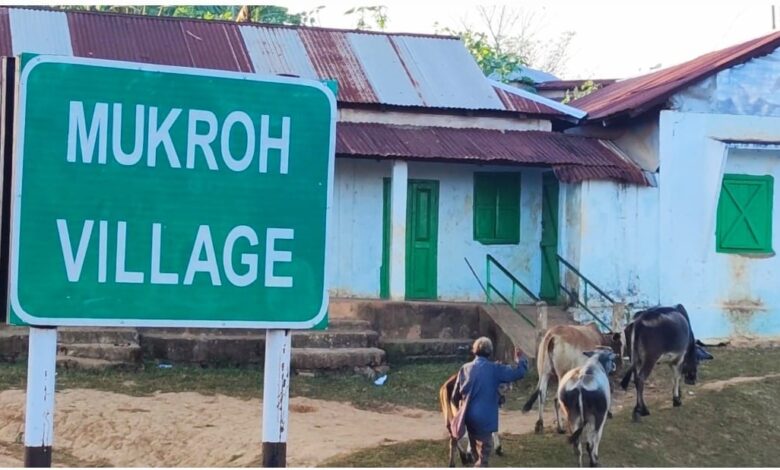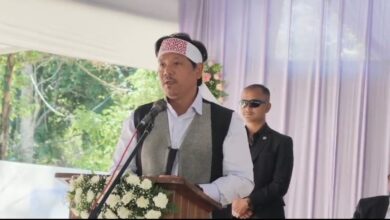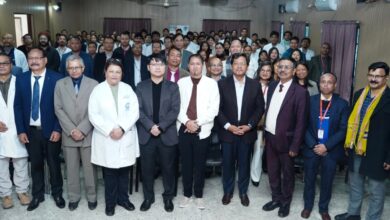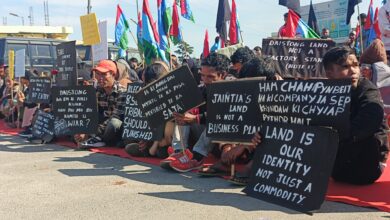How long will Meghalaya-Assam border issue remain stagnant?
The areas of difference have witnessed violence & are experiencing economic backwardness & need immediate solution

 Even after 53 years of Meghalaya’s statehood, the two neighbouring state governments of Meghalaya and Assam are yet to resolve the final settlement of the border disputes.
Even after 53 years of Meghalaya’s statehood, the two neighbouring state governments of Meghalaya and Assam are yet to resolve the final settlement of the border disputes.
Out of the 12 areas of difference (or disputes), only six have been sorted out by signing the MoU between the chief ministers of Meghalaya, Conrad Sangma, and Assam, Himanta Biswa Sarma, on March 29, 2022.
The six (areas) sectors of difference which were sorted out — though not demarcated by a joint survey of both states and Survey of India — cover Tarabari, Gizang Reserve Forest, Hahim, Boklapara, Khanapara-Pillangkata and Ratacherra.
The prominent among the remaining six sectors awaiting resolution are Langpih, Borduar, Nongwah, Mawtamur, Deshdemoreah Block I-Block II and Khanduli. Out of these, Langpih and Khanduli remain the most sensitive ones.
On May 14, 2010, the Assam Police gunned down 10 people following violence over land dispute. These people were from different villages. Those who were brutally shot dead at Mukroh under Khanduli sector on November 22, 2022, were all from that village. One home guard from Assam also died.
The main reason for the decades of border dispute is the vast fertile tracks of land mainly under the West Khasi Hills, Ri Bhoi and Jaintia Hills districts of Meghalaya.
Now, regarding the disputes of Block I (in Ri Bhoi) and Block II (in Jaintia Hills), which are approximately 800 sq. miles, the dispute started when the areas were politically tagged with Mikir Hills (now Karbi Anglong), despite protests and agitations from Jaintia Hills, to create Mikir Hills district by the then Government of Assam via Notification No. TAD/R/31/50/148 Dated 13/4/1951 with defined boundary Notification and dated 13/4/1951.
The decision to tag the mentioned blocks from the then Jowai sub-division was made at a meeting of the then Boundary Commission held in the Chamber of the then Premier of Assam, Motiram Bora, on October 30, 1950, in Shillong. The Commission included legislators Dendeswar Hazarika, KS Terang, Sita Bonily Khongmen and Larsing Khyriem. Other stakeholders were SK Mallick, ICS, as a member, RV Subramaniam, IAS, secretary, and CS Booth, additional secretary of the Commission.
Coming to the Langpih sector under West Khasi Hills, this writer toured the sector to get first-hand information about the situation.
It is a fact that the Assam Government has set up a full-fledged Police outpost on the eastern side near the Langpih Market. The Meghalaya government has only posted a temporary outpost 400 m on the western side of the market. The satellite villages in and around Langpih are Mawlang A and B, Umyiap, Mawbyrkong, Umwahsiang, Dronpara, Umpha, Umbah, Umtap, Madan Jaiaw, Makoibari, Lawbah, Mawbynna, Umsram, Mawsikar, Umbyrsit, Iewnongma, Nongma, Umwali, Nongmawlein, Nongmawlong, Madan Sohstap and other smaller villages which are farther from Langpih. These are inhabited by the Khasi communities called Maram Muliang. There are also the Garos and Nepalis in other nearby villages. The population of the whole area is approximately 20,000. Only Nepalis are around 1,000.
The mainstays of the inhabitants there are agriculture and horticulture. The main cash crops are ginger, broomstick, oranges and other citrus fruits, chillies, yam, tapioca, pineapples, a few varieties of bananas, jackfruits, papaya and paddy. It must be mentioned that some farmers have experimented with apples with the assistance of the Horticulture office in Nongstoin.
Barring pumpkins, cucumber and small quantities of mustard, the farmers of the areas have not given importance to growing vegetables even when the land is extremely fertile. Despite having great agricultural potential, the economy of the area has remained poor because of the lack of roads and other infrastructure. And this condition will continue for the next 10-20 years if not more.
Till today, the average annual income of the people here per family is about 5-6 lakh despite their hard work. The good news is that the majority of families here have their land. The bad news is that in some areas here, as reportedly elsewhere in border areas of Jaintia Hills, some people had faced a lot of harassment by and high-handedness and gunshots of the Assam Police.
In some cases, there was displacement only to hand over land to other communities from Assam. Moreover, the Khasi areas which were once covered with thick forests abound with teak, sal and other precious timbers were plundered and looted by miscreants with the connivance of the Assam timber merchants and Police.
The only saving grace is that small patches of forests are still seen. The Khasi villages take care of those green patches to conserve water for the community. Even after this, several villages are still experiencing drinking water problems and village elders and Sordars have to approach the PHE officials for water supply from JJM or other public water supply for consumption.
The areas are approximately 60-70 km from Nongstoin, the district headquarters of West Khasi Hills, or about 50 km from Riangdo, the civil sub-division.
As mentioned earlier, the border areas which run nearly 150 km from East to West and about 40-45 km from North to South lack roads and communications. These areas have been neglected for 53 years though some negligible development began under Mukul Sangma and Conrad Sangma.
The crying need of the Langpih border Sector under West Khasi Hills as well as the Madan Umwang and other areas of Block II under Ri Bhoi and Khanduli and other areas of Block I under Jaintia Hills is that Conrad Sangma must solve the 53-year-long border problems with Assam, especially in the so-called remaining areas (sectors) of disputes (difference).





